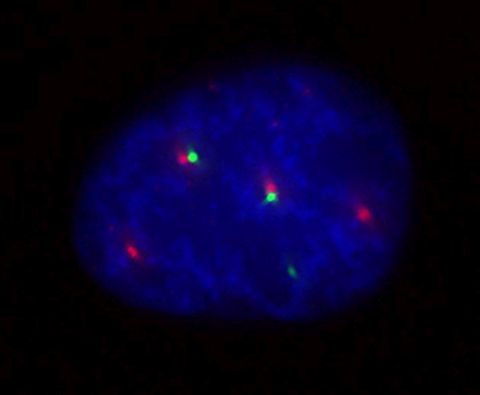|
|
|
Close Help | ||||||||||||||
Scientists now have a better understanding of how human cells assemble the molecular scissors that cut RNA. It’s the next step in understanding how our cells read and translate the information stored in their DNA. The process is described by a team of experts from the Institute of Molecular Genetics of the Czech Academy of Sciences in their new research. Its results were recently published in the journal Nature Communications.
There are approximately 20,000 genes in human DNA, a kind of “pages” of our “gene book”. Each page contains instructions for making a particular protein. Before the protein is made, the information from the DNA is transcribed into an RNA molecule called pre-mRNA, which is an exact copy of that page in the DNA.
Only a small portion (about one-tenth) contains the information to make a given protein, while the rest is removed in a process called RNA splicing. RNA splicing is done by a huge molecular scissors called the “splicing complex”. It consists of 150 pieces that must fit together precisely for the scissors to work properly.
The RNA hairdresser
The team, led by David Staněk from the Institute of Molecular Genetics of the Czech Academy of Sciences, in collaboration with the Institute of Microbiology of the Czech Academy of Sciences, the Julius Maxmilian University of Wurburg and Yale University, found that some of the pieces must first be modified to fit correctly into the puzzle, and described the protein that makes these modifications. This protein is part of a larger complex whose malfunctions cause motor neuron death and muscular dystrophy.
“The protein, called Gemin3, was discovered nearly 25 years ago. It was known to do something very important in the body because no organism could survive its removal, but it was not known what. A colleague at the Institute of Microbiology used mathematical modelling to discover that the small RNAs that are part of the splicing complex do not look as described in molecular biology textbooks and cannot function properly in this form. We confirmed his mathematical predictions experimentally and showed that Gemin3 acts as a kind of hairdresser that combs the small RNAs to fit into the splicing complex. It is amazing to uncover the function of a molecule that many scientists around the world have been studying for so long,” David Staněk explains his feelings about the discovery.
Such results help to understand the basic mechanisms of how our cells work, and David Staněk and his team are using them to study inherited diseases affecting the retina.

Pánek J, Roithová A, Radivojević N, Sýkora M, Prusty AB, Huston N, Wan H, Pyle AM, Fischer U, Staněk D: The SMN complex drives structural changes in human snRNAs to enable snRNP assembly. Nature Communications 2023 14(1):6580. [pubmed] [doi]